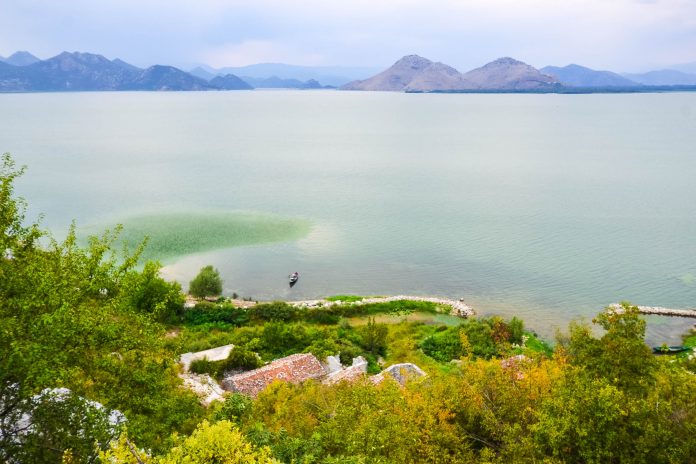Der riesige Skadar-See in Montenegro und Albanien ist der größte See am Balkan. Oft als Herz und Seele Montenegros bezeichnet war der Skadar-See einst Sommersitz der montenegrinischen Herrscherfamilien und bietet spektakuläre Landschaften, die von der Zivilisation noch weitgehend unberührt sind.
Der Skadar-See im Süden von Montenegro ist ein Naturjuwel 7 Kilometer abseits der Adriaküste. Im Italienischen wird der Skadar-See auch Skutari-See genannt, was in Montenegro oder Albanien allerdings kaum geläufig ist. Seit 1983 steht der montenegrinische Teil des Skadar-Sees als Skadarsko Jezero Nationalpark unter besonderem Schutz.
Der Skadar-See wird durch eine Vielzahl von unterirdischen Zuflüssen aus dem umliegenden Bergland gespeist. Mit einer Fläche von 550 Quadratkilometern ist der Skadar-See bei seiner größten Ausdehnung im Winter etwas größer als der Bodensee, jedoch um ein Vielfaches weniger belebt. Unter der wärmenden Sonne Montenegros ist die Wasseroberfläche des Sees meist menschenleer.
Der 40.000 Hektar große Nationalpark schließt nicht nur den See selbst, sondern auch weitläufige Ufergebiete ein. Als eine unserer Top 10 Sehenswürdigkeiten in Montenegro sollte er beim Montenegro-Urlaub unbedingt auf der Bucket List stehen!
Inhaltsverzeichnis
BILDER: Skadar-See
Fotogalerie: Skadar See (Skadarsko Jezero)
Flora und Fauna am Skadar-See
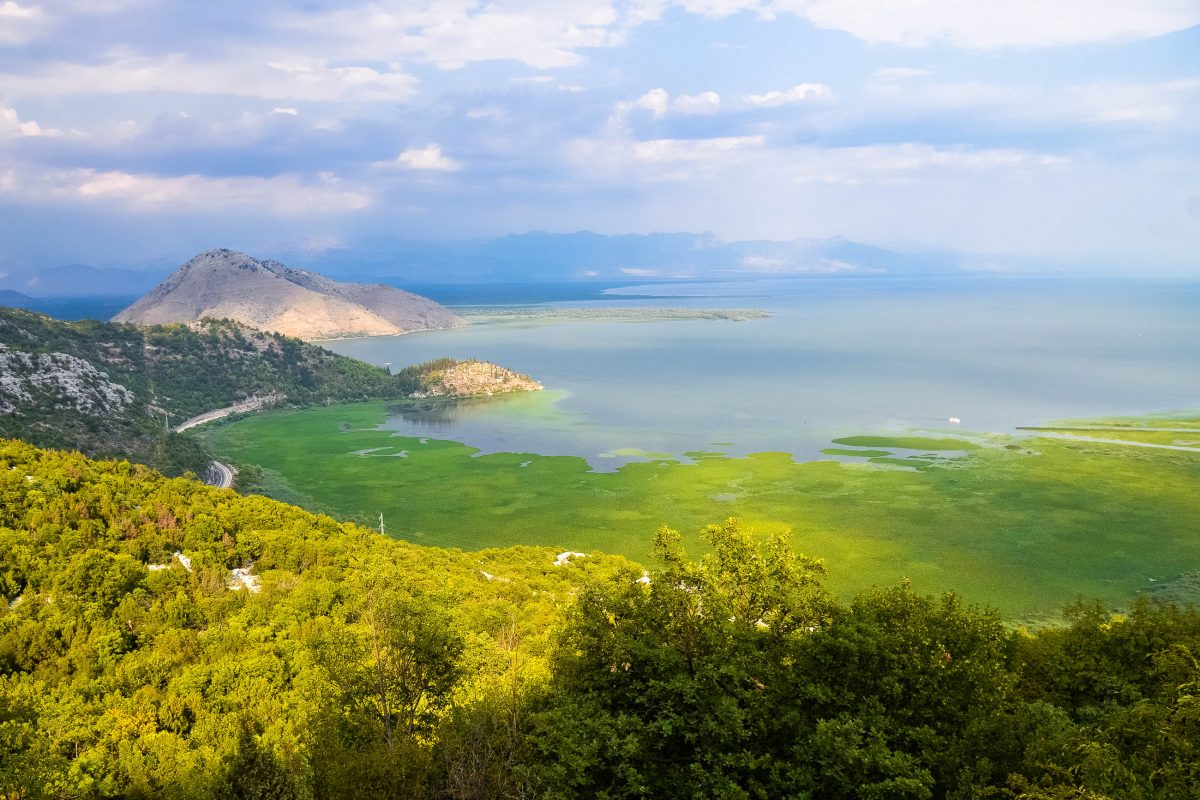
Über 250 Vogelarten bevölkern die Lüfte und Ufer des Skadarsko Jezero. An die 40 Fischarten tummeln sich im Skadar-See, 7 davon kommen ausschließlich hier vor. Zu den tierischen Highlights des Skadar-Sees gehört eine der europaweit letzten Pelikan-Kolonien, weiters können Störche, Reiher, Seeadler, Kormorane und Ibisse entdeckt werden. An Land sind Eidechsen, Schildkröten, Schlangen und sogar Wildschweine anzutreffen.
Unterwegs im Skadar-See-Nationalpark
Die erste Anlaufstelle für Besucher ist das Informationszentrum auf der Halbinsel Vranjina. Neben einer kleinen Ausstellung über die Tier- und Pflanzenwelt am Skadar-See sind hier auch eine hilfreiche Karte des Nationalpark-Gebietes sowie eine Anglerlizenz erhältlich. Campen ist nicht erlaubt.
Klosterroute
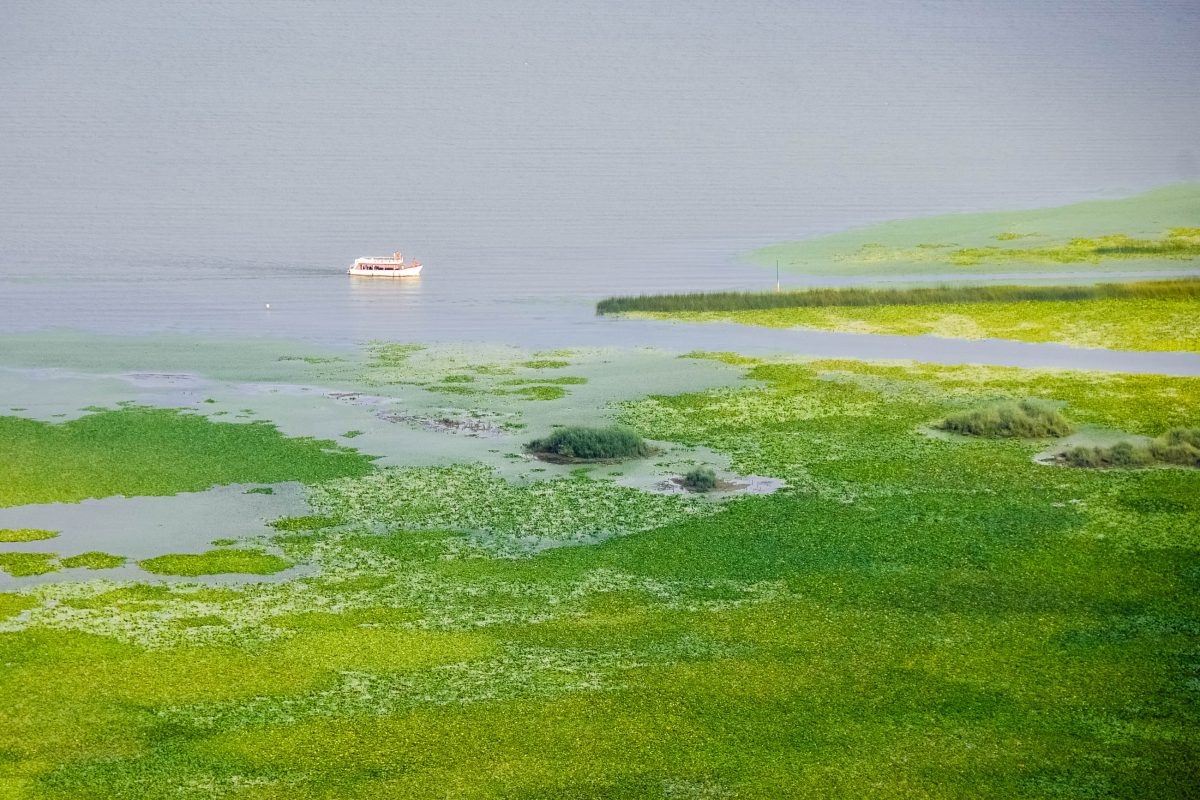
Im Jahr 1233 wurde am lebensspendenden Wasser des Skadar-Sees beim heutigen Vranjina das Kloster Sveti Nikola errichtet, das zum Bischofssitz der neu gegründeten Diözese des frühserbischen Zeta-Staates wurde. Nach und nach folgten weitere Klosterbauten, insgesamt neun an der Zahl.
Nachdem der Skadar-See immer wieder Schauplatz von Gefechten, vor allem gegen die Türken, war, wurden einige der Klöster zerstört. Manche sind aber noch heute von Nonnen und Mönchen bewohnt.
Die sogenannte Klosterroute ist eine der faszinierendsten Panoramastraßen Montenegros. Die knapp 60km lange Strecke führt vom Bade-Ort Ulcinj nach Virpazar und man benötigt dafür mit dem PKW in etwa 2 bis 3 Stunden Fahrzeit. Alternativ kann man die Strecke mit dem Fahrrad bewältigen, sie ist aber ziemlich anspruchsvoll.
Tipp: Die schönsten Ausblicke auf der Klosterroute hat man, wenn man die Route von Südost nach Nordwest befährt. Fährt man anders herum, sollte man häufige Stopps zum betrachten des Panoramas einplanen.
Ostros
Das erste Örtchen, das man auf der Klosterroute passiert, ist Ostros. Das Dorf gibt nicht viel her, nicht einmal der See ist von hier aus zu sehen. Jeden Mittwoch ist hier allerdings traditioneller Markt: ein stimmungsvolles Spektakel voller Farben und Düfte.
Murići

Das einst albanische Dorf am Westufer des Skadar-Sees liegt am Fuß des fast 1.600m hohen Rumija und verfügt über einen Zugang zum See. Das Dorf ist kaum sehenswert, der lange, saubere Strand und das klare, angenehm warme Wasser schon eher. Am Strand gibt es ein kleines Restaurant und man kann einfache Hüttenzimmer mieten oder Campen.
Murići ist auch der Ausgangspunkt für Ausflüge auf die vorgelagerten Inselchen im Skadar-See. Die Insel Beška liegt gleich gegenüber von Murići und kann auch schwimmend erreicht werden. Man kann auf der Insel Beška die Klosterkirche Sveti Đorđe besichtigen, die im 14. Jahrhundert errichtet wurde.
Die Insel Starčevo ist von Murići aus mit dem Boot erreichbar. Mit etwas Glück kann man die dort befindliche Kirche auf Anfrage besichtigen.
Skje
Das Dorf Skje ist so gut wie nicht mehr vorhanden. Die Zufahrt zur alten Hafenmole ist einspurig und steil. Wer vermeiden will im Retourgang bergauf zurück zu fahren (manchmal parken die Fischer ihre Fahrzeuge mitten auf der Straße), der sollte den letzten Kilometer zu Fuß in Angriff nehmen. Wer Lust hat kann hier recht ungestört baden.
Godinje
Die Ortschaft Godinje ist vor allem wegen seiner einzigartigen, für die Grmnica-Region typischen Architektur aus dem 17. Jahrhundert sehenswert.
In der Bucht vor Godinje ist die ehemalige winzige Gefängnisinsel Grmožur auszumachen, die im 19. Jahrhundert von den Türken errichtet wurde. Die Insel ist heute völlig verlassen.
Tipp: In Godinje sind Mitglieder der montenegrinischen Weinstraße zu finden!
Virpazar
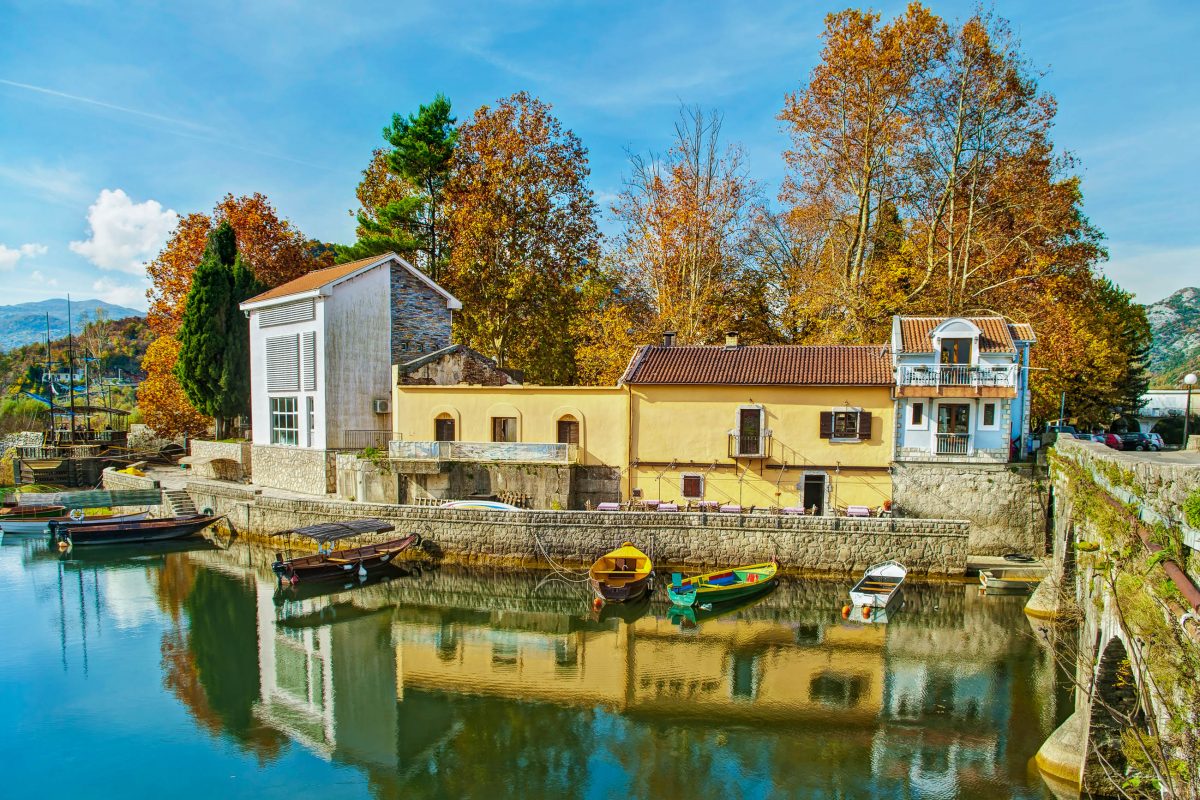
Virpazar, ein winziges Dörfchen mit nicht einmal 400 Einwohnern, ist die einzige „touristische“ Siedlung am herrlichen Skadar See. Virpazar liegt am westlichen Ufer des Sees und am Fluss Crmnica, der ganz in der Nähe in den See mündet. Die Kulisse aus Fluss und See, sanften Hügeln und saftiger Vegetation ist in Verbindung mit der dünnen Besiedlung Balsam für jede gestresste Seele.
BILDER: Virpazar am Skadar See
Fotogalerie: Virpazar am Skadar See
„Touristisches Zentrum“ am Skadar-See

Virpazar als touristisches Zentrum zu bezeichnen, ist maßlos übertrieben. Einige der Häuser sind dem Verfall preisgegeben, zu sehen gibt es kaum etwas hier. Größter Anziehungspunkt sind der idyllische See und die traumhafte Landschaft in seiner Umgebung.
Tipp: Umrunden Sie den Skadar-See auf der Klosterroute, die direkt in Virpazar startet. Für die rund 60km lange Strecke bis nach Ulcinj benötigen Sie mit dem PKW etwa 2-3 Stunden Fahrzeit.
Dennoch ist Virpazar die einzige Siedlung, die am Skadar-See mit kleinen Pensionen und dem Virpazar-Hotel, sowie einigen Restaurants aufwarten kann. Seit im Jahr 1905 das Dock errichtet wurde, mauserte sich die winzige Ortschaft zum Verkehrsknotenpunkt des Skadar Sees. Besonders einladend ist die Konoba, deren sonnige Terrasse direkt am Wasser liegt.
Verkehrsknotenpunkt am Skadar See
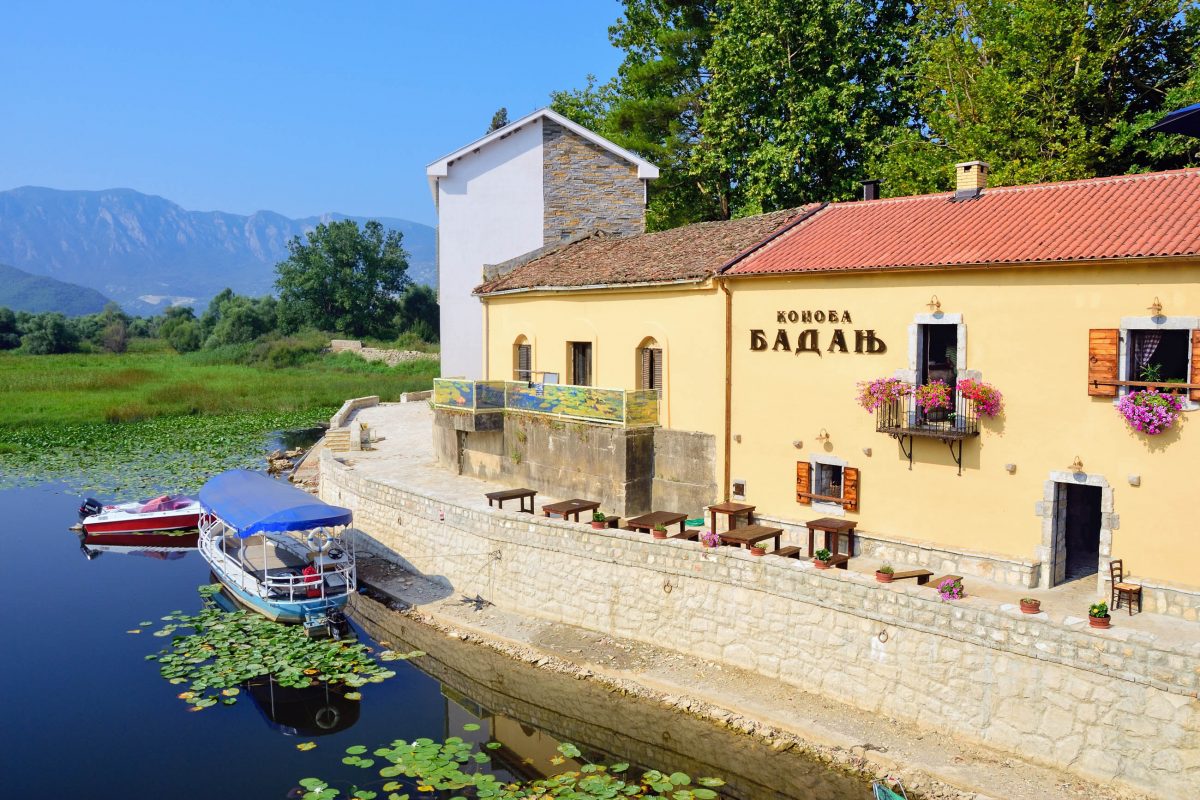
Im Sommer starten in Virpazar Ausflugsboote über den See. Auch die Bahn zwischen Belgrad und Bar macht einen Zwischenstopp in Virpazar, ebenso wie Busse aus Podgorica oder der Küstenstadt Sutomore. Wer öffentlich an den Skadar-See anreist, wird dies also über Virpazar tun.
„Sehenswürdigkeiten von Virpazar“
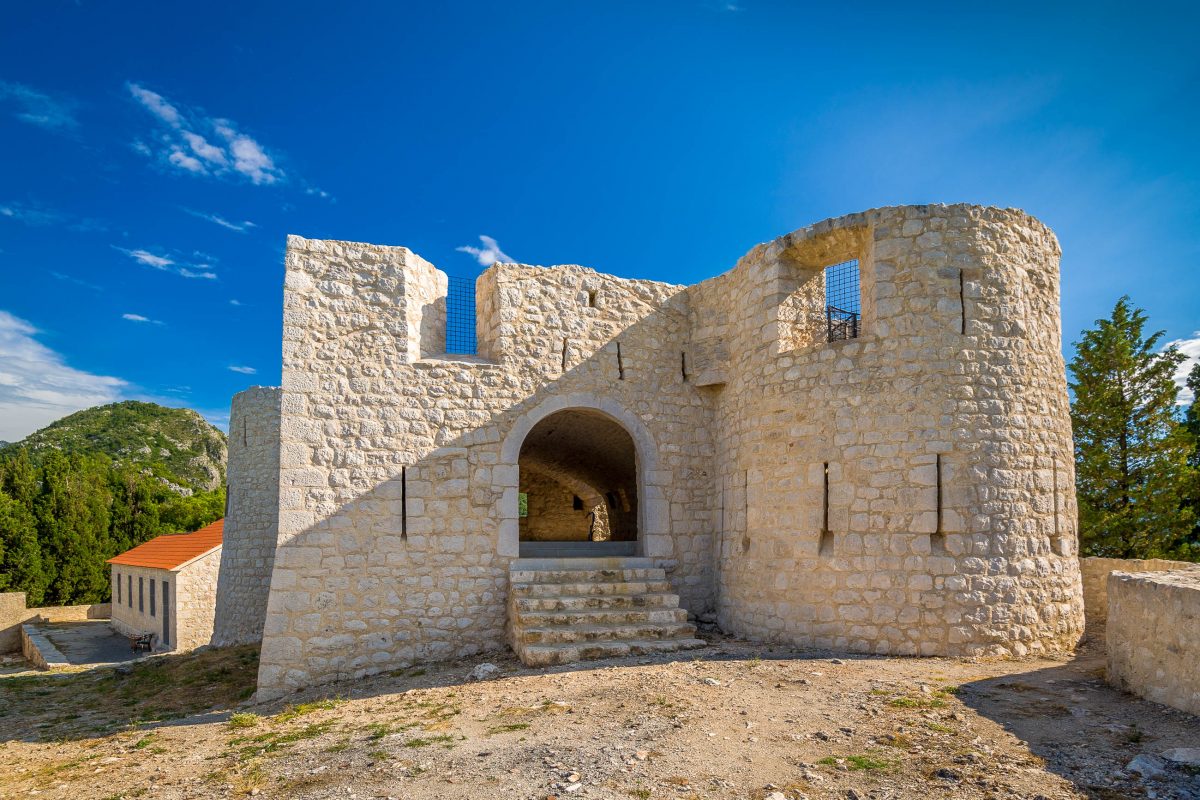
Einzige nennenswerte Sehenswürdigkeiten in dem verschlafenen Nest sind der malerische Seehafen und das gewaltige Kriegerdenkmal an der Brücke, wo hölzerne Soldaten auf einem riesigen Felsen thronen. Eine kleine Wanderung führt außerdem zu den Ruinen der Besac-Burg, von deren Hügel sich ein herrlicher Ausblick über den Crmnica und den Skadar-See auftut.
Festungen am Skadar-See
Von Virpazar aus nach der Brücke über dem See liegt Lesondro, wo einst die Festung des berühmten Dichterfürsten Njegoš thronte, dessen Mausoleum ein beliebtes Ausflugsziel im Lovćen-Nationalpark ist. Die Festung wurde 1843 zur Verstärkung der Grenze zum Osmanischen Reich errichtet.
Bedeutender war einst die Festung Žabljak Crnojevića nördlich von Lesondro. Die heutige Ruinenstadt war einst Sitz der Herrscherdynastie Crnojević, jenem Geschlecht, das nach der Vertreibung durch die Türken die damalige Hauptstadt Cetinje gründeten.
Rijeka Crnojevića
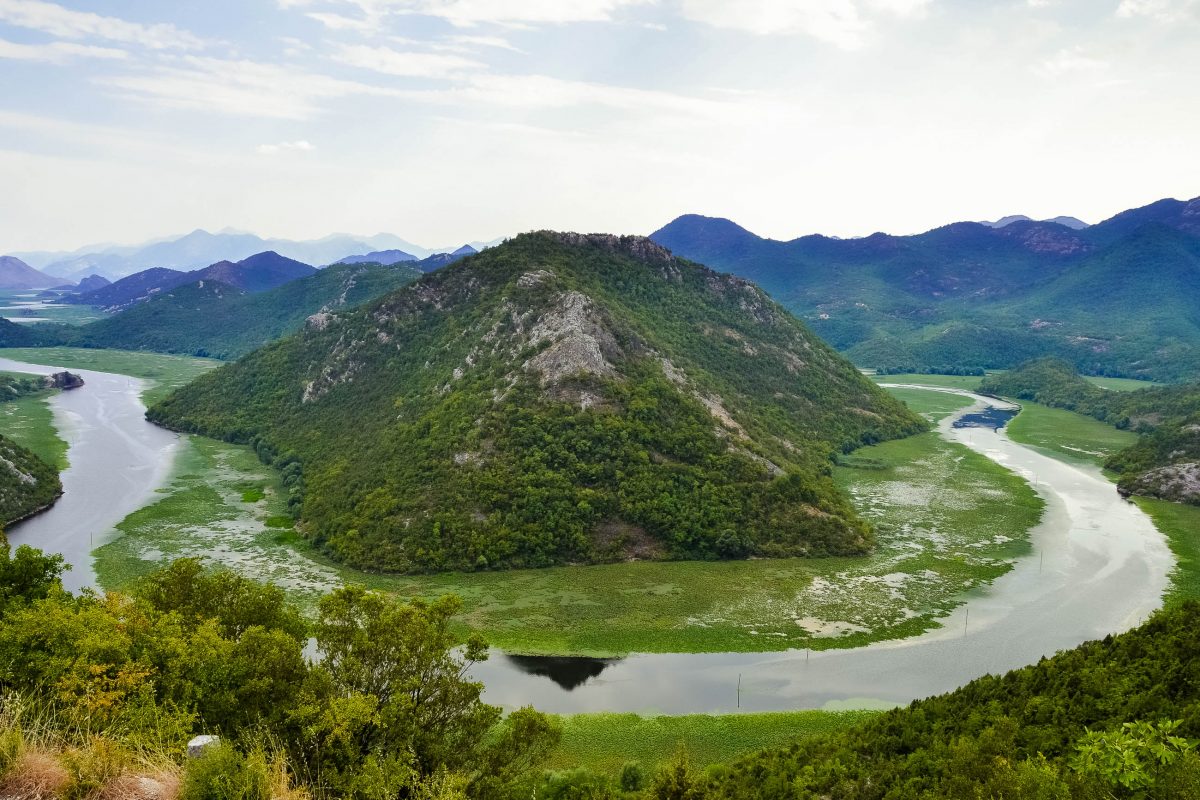
Von Virpazar aus kann man den Skadar-See auf einer schmalen Piste – es gibt immer wieder Ausweichmöglichkeiten – noch weiter Richtung Norden umrunden. Fantastische Ausblicke auf den See sind garantiert. Die einzige Ortschaft, die man durchfährt, ist am Ende des Sees das malerische Rijeka Crnojevića in seinem märchenhaften Flusstal.
Dem mäandernden, dunkelblauen Band des Flusses folgend, das zwischen moosgrünen Wasserpflanzen und üppig grünen Hängen hervor schimmert, gelangt man immer tiefer in die zauberhafte Landschaft bis zum Dorf Rijeka Crnojevića. Beim Anblick der unberührten Weiten, an deren Horizont schemenhaft Berggipfel zu erkennen sind, glaubt man, das Ende der Welt erreicht zu haben.
Königlicher Sommersitz
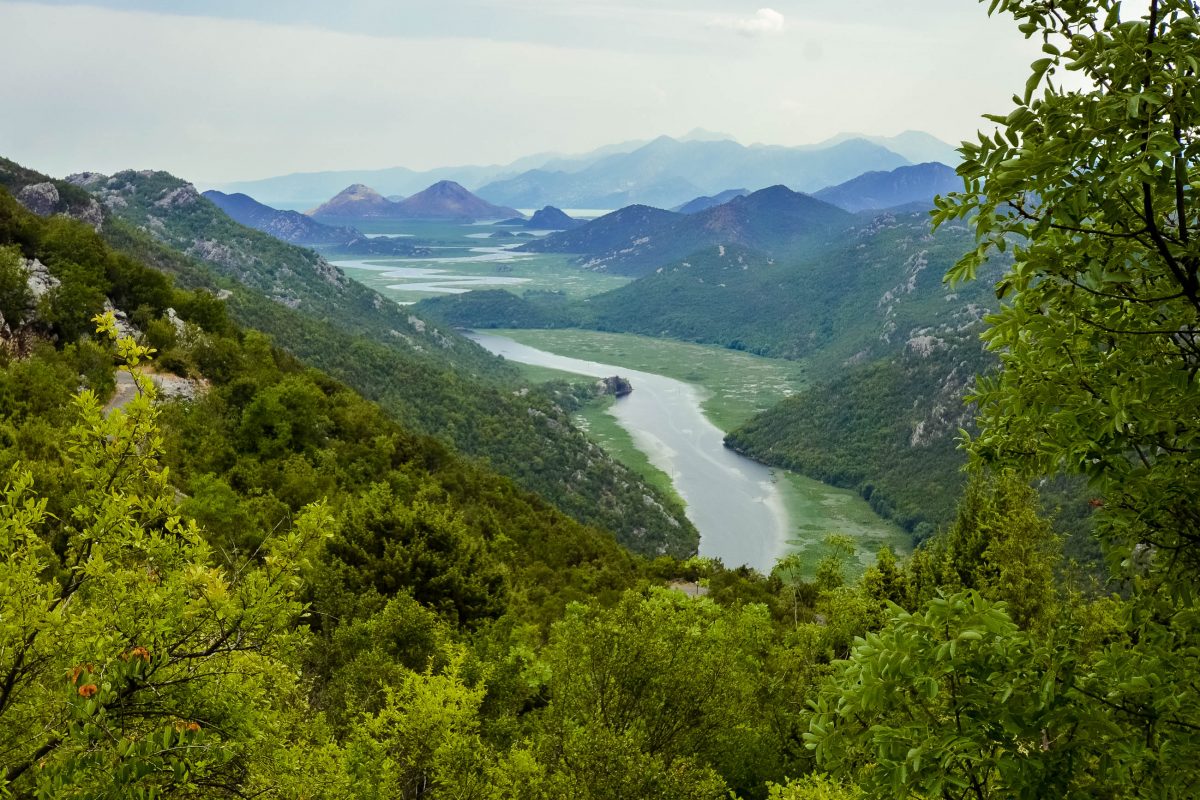
Doch Rijeka Crnojevića wird nicht nur wegen seiner atemberaubenden Landschaft angefahren. Man glaubt es kaum, doch Rijeka Crnojevića war einst Sommersitz der Herrschenden aus Cetinje, die hier im 15. Jahrhundert eine Festung, ein Kloster und sogar den Bischofssitz etablierten. Im 19. Jahrhundert diente das wunderbare grüne Tal dem Prinzen Nikola als Jagdrevier.
Stari Most in Rijeka Crnojevića
Ein Highlight des Dorfes ist die Stari Most („Alte Brücke“), die nach seinem Bauherrn Prinz Danilo II. eigentlich Danilov Most heißt. Die Fußgängerbrücke im Ortskern wurde 1855 vom Nachfolger des Dichterfürsten Petar II. Njegoš errichtet. Wenn ihr euch etwas für Montenegros Geschichte interessiert, habt ihr bestimmt schon von ihm gehört. Sein Mausoleum im Lovcen Nationalpark ist übrigens äußerst sehenswert!
Die Stari Most erstreckt sich auf einer Länge von 43 Metern in zwei Bögen über den schmalen Fluss. Das Restaurant gleich neben der Brücke ist übrigens sowohl aufgrund der Aussicht als auch aufgrund seiner Fischspezialitäten zu empfehlen.
Tipp: Die Stari Most von Rijeka Crnojevića ist bei Nacht noch viel schöner, wenn sie mit Hilfe von Unterwasserscheinwerfern gekonnt in Szene gesetzt wird.
Ausblick auf den Rijeka Crnojevića
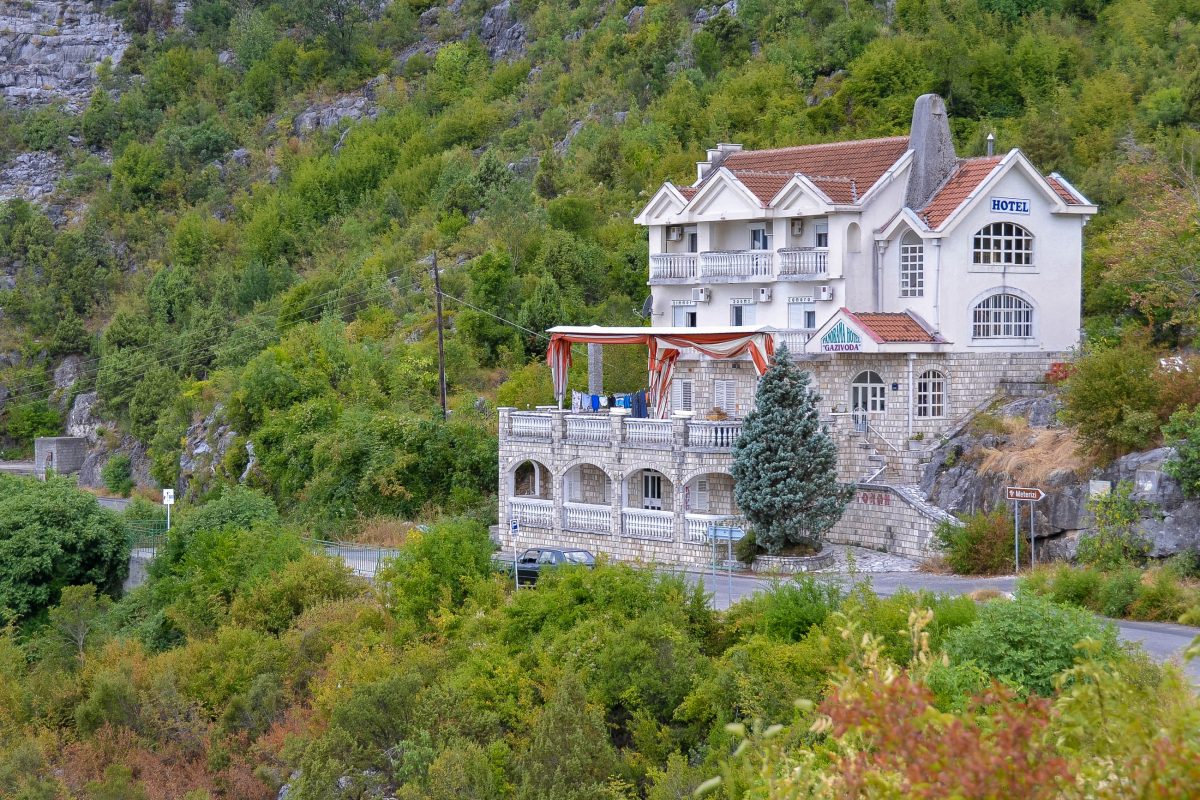
Wer von Rijeka Crnojevića weiter in Richtung Podgorica fährt, sollte abermals die Kamera bereithalten. Vom Hotel Gazidova aus eröffnet sich jener atemberaubende Blick auf eine Mäander des Flusses um einen saftig grünen Hügel, der DAS Vorzeigemotiv der Region darstellt.
Karuč

Und noch ist es mit den traumhaften Ausblicken nicht vorbei. Vom Örtchen Karuč aus, das nach der Rijeka Crnojevića am nächsten „Ausläufer“ des Skadar-Sees liegt, kann sich das Auge an den intensiven Blau- und Grüntönen gar nicht satt sehen. Das atemberaubende Bild, das der geschwungene Fluss zwischen grünen Hängen, sanften Hügeln und dem blauen Himmel abgibt, grenzt wirklich schon an Kitsch!
Weiterführende Links:

